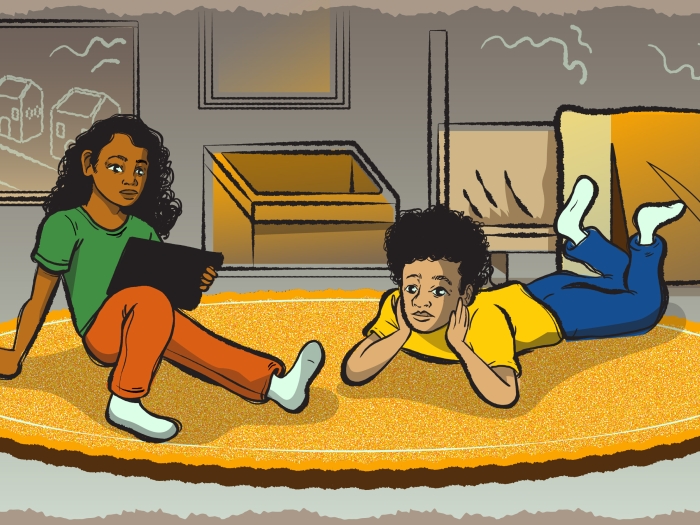Catching one’s breath after mild or no activity could be a sign of a rare but serious condition affecting the body’s ability to circulate oxygenated blood to the heart.
7:00 AM
Author |

There are many reasons a person might feel winded after climbing a few flights of stairs or some other brief physical activity.
MORE FROM MICHIGAN: Sign up for our weekly newsletter
Among them? Pulmonary hypertension — or high blood pressure in the loop of vessels connecting the heart and lungs. Shortness of breath is a telltale sign of the condition.
"That is the most common presenting symptom," says Vallerie McLaughlin, M.D., director of the Pulmonary Hypertension Program at the University of Michigan Frankel Cardiovascular Center.
It's because "the right side of the heart is having trouble pushing blood flow through the lungs — and it's not getting to the left side of the heart and body," McLaughlin says. "It puts strain on the right side of the heart, which is not used to pushing against the high pressure."
Patients with PH have blocked or narrowed arteries in their lungs. As a result, the system designed to carry fresh, oxygenated blood into the left side of the heart and then to the rest of the body is affected.
Other indicators of PH include fatigue, lightheadedness, chest pain, racing heartbeat and swelling in the ankles or legs.
Despite those distinct warnings, PH is often misdiagnosed. "Your primary care doctor is going to rule out the common stuff first," McLaughlin says, such as asthma or another heart or lung problem.
Patients, she adds, should request an echocardiogram — an ultrasound of the heart — if a cause of the symptoms isn't found. That could prompt a right-heart catheterization, which can measure the pressure of the heart and lungs.
Other tests may follow to determine the underlying cause of an individual's PH.
Pulmonary hypertension isn't necessarily caused by something a person did. And sometimes we don't find a cause.Vallerie McLaughlin, M.D.
Causes and treatment
One type of PH, known as pulmonary arterial hypertension, causes blood vessels of the lungs to become thick and narrow, resulting in an elevation in pressure. About 10 percent of such cases are genetic, and people with a family history have a greater risk of developing it, McLaughlin says.
The remainder of PH diagnoses, grouped into five types by the World Health Organization, are linked to a variety of factors, including left-heart and lung diseases, blood clots and conditions such as HIV, sickle cell disease and scleroderma. Certain drugs, such as methamphetamines and the now-banned diet pill known as fen-phen, can also trigger it.
"It's not necessarily caused by something a person did," says McLaughlin. "And sometimes we don't find a cause."
SEE ALSO: 5 Basics to Know About Bicuspid Aortic Valve Disease
PH affects more women than men and can occur at any age, including in children, McLaughlin says. It most typically develops in people in their 30s and 40, she notes, and it can go undiagnosed for years.
Each patient's treatment will vary based on the severity of his or her condition.
Some individuals could receive oral, inhaled, IV or subcutaneous (beneath the skin) drugs to dilate blood vessels or increase the supply of blood and oxygen to the heart, among other objectives. Those with blood clots in their lungs may require surgery to remove them.
Lung transplantation is an option when all other medical therapies fail, though McLaughlin views that as a last resort: "That's really trading one disease for another."
Lifestyle shifts
All PH patients should also make lifestyle changes to keep their symptoms, including shortness of breath, in check.
"Sodium restriction is probably the most important thing," says McLaughlin. The American Heart Association recommends a healthful diet that's also low in fat, cholesterol and sugar.
Key, too, are staying active, maintaining a proper weight and quitting smoking.
And it's important to maintain contact with your health care provider during treatment and beyond, McLaughlin stresses.
"Patients have to be watched closely; the death rate is still high from this disease," she says. "We need to make sure they're improving and reach the goals that we set for them."

Explore a variety of health care news & stories by visiting the Health Lab home page for more articles.

Department of Communication at Michigan Medicine
Want top health & research news weekly? Sign up for Health Lab’s newsletters today!





